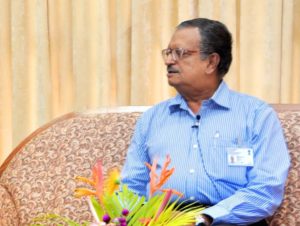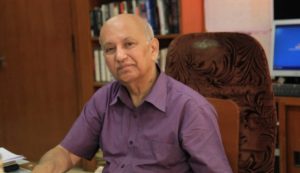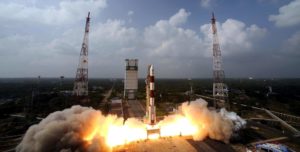Here is my piece on Marsdaily about the geopolitics of India’s Mars mission. Despite what the piece states at the top – I am NOT in Bangalore!

Not for profit podcast. Astronomy, Deep Space Exploration and International Collaboration
By Gurbir 2 Comments
Here is my piece on Marsdaily about the geopolitics of India’s Mars mission. Despite what the piece states at the top – I am NOT in Bangalore!

 November 21st 2013, was the 50th anniversary of a rocket launched from India into space. The launch itself was an all-Indian affair, but with significant international support. The rocket was American, carried a French Sodium Vapour payload, and was assisted by a computer and a helicopter from the Soviet Union. From this meagre beginning, India has become a key player not only in building and launching rockets but also in designing, building, and deploying satellites.
November 21st 2013, was the 50th anniversary of a rocket launched from India into space. The launch itself was an all-Indian affair, but with significant international support. The rocket was American, carried a French Sodium Vapour payload, and was assisted by a computer and a helicopter from the Soviet Union. From this meagre beginning, India has become a key player not only in building and launching rockets but also in designing, building, and deploying satellites.
This episode was recorded on the site of that first launch. Then known as the Thumba Equatorial Rocket Launch Station and is today known as the Vikram Sarabhai Space Centre. Sundaram Ramakrishnan, the current director of the Vikram Sarabhai Space Centre (VSSC), talks about his 4-decade-long career with the Indian Space Research Organisation. He has played a central role throughout the development of India’s most reliable launcher – the Polar Satellite Launch Vehicle (PSLV).
Podcast: Play in new window | Download (Duration: 29:28 — 27.0MB) | Embed
Subscribe: Apple Podcasts | Spotify | RSS | More

The Indian Space Research Organisation formally came in to being in 1972. By then, India had been developing its space program for almost a decade. The first launch to space from Indian soil was a two stage Nike-Apache rocket supplied by USA with a sodium payload from France. The rocket delivered a vertical trail of sodium vapour in space above the twilight sky of the south eastern coast of Kerala on 21st November 1963.
In this episode, professor UR Rao talks about his rich and diverse career. Professor Rao completed his Phd under Dr Vikram Sarabhai, then went on to work for NASA at MIT and in Texas exploring the Solar System with instruments on NASA’s Pioneer and Explorer spacecraft. He returned to India at Sarabhai’s request and, after heading the Physical Research Laboratory, became the chairman of the Indian Space Research Organisation in 1984. He served in that role until 1994.
During his 81 years, he has contributed to many significant areas of space and science exploration. Several key individuals associated with space and science research, including CV Raman, Robert Millikan, Ed Stone, Arthur Clark, James Van Allen , Abdus Salam and Vikram Sarabhai, were individuals he knew personally, and some were colleagues.
Podcast: Play in new window | Download (Duration: 37:47 — 34.6MB) | Embed
Subscribe: Apple Podcasts | Spotify | RSS | More

India launched its Mars Orbiter Mission (MOM) with its Polar Satellite Launch Vehicle (PSLV) launcher and everything, including the weather, performed as expected. The 1340KM Mars bound probe with a 15km package of five science instruments will arrive at Mars in December next year.
Currently MOM is in Earth orbit where it will remain for another week. Why? Because the Indian Space Research Organisation (ISRO) is still working on its more powerful launcher the Geosynchronous Launch Vehicle (GSLV) so had to use the less powerful but extremely reliable PSLV. Hence the modest science package and the requirement of six orbits of Earth for gravity assist. Several engine firings on November 6, 7, 8, 9 and 11 are required, each one increasing MOM’s speed. A final burn on 16th November will finally supply it the speed it needs to reach Mars. With another critical engine burn is required for arrival in Martian orbit on 1st of December. If that burn, almost a year from now fails, MOM will fly past Mars and be lost in space.
India’s space program was founded almost 50 years ago on the principle that space technology is an essential instrument for national development. Although commercial, military and scientific elements have since crept in, improving the quality of life for the huge Indian population, remains its primary objective.
ISRO has designated this as a technology demonstrator, India is building on the its Chandryaan-1 mission from 2008 but the engineering and technical challenges are an order of magnitude higher. ISRO was successful in reaching the Moon on its first attempt, it is hoping to do likewise with Mars.
Here is a 4 minute clip of my audio interview on Voice of Russia. I am introduced as a science journalist which of course I am not.